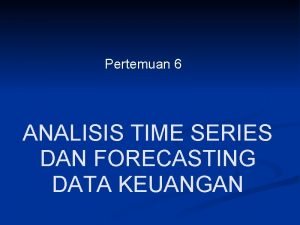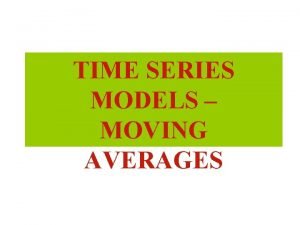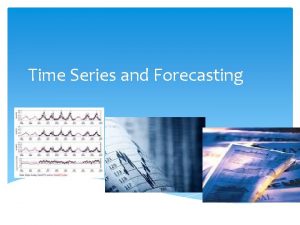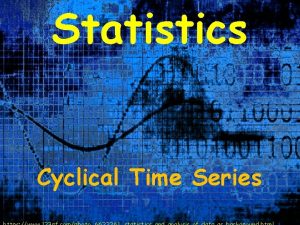Time Series and Forecasting Time Series and its







- Slides: 7

Time Series and Forecasting

Time Series and its Components TIME SERIES is a collection of data recorded over a period of time (weekly, monthly, quarterly), an analysis of history, that can be used by management to make current decisions and plans based on long-term forecasting. It usually assumes past pattern to continue into the future Components of a Time Series 1. Secular Trend – the smooth long term direction of a time series 2. Cyclical Variation – the rise and fall of a time series over periods longer than one year 3. Seasonal Variation – Patterns of change in a time series within a year which tends to repeat each year 4. Irregular Variation – classified into: Episodic – unpredictable but identifiable Residual – also called chance fluctuation and unidentifiable

Linear Trend l The long term trend of many business series often approximates a straight line • Use the least squares method to find the best linear relationship between 2 variables • Code time (t) and use it as the independent variable • E. g. let t be 1 for the first year, 2 for the second, and so on (if data are annual)

Linear Trend – Example Suppose the monthly sales revenue for an appliance store for a five-month period is as given below. Use the Least Squares method to determine the trend equation and hence estimate the sales revenue for the next month. Month (t) 1 2 3 4 5 Sales Rev. ($1000 s) (Y) 1 1 2 2 4

Linear Trend – Example t 1 2 3 4 5 Y t 2 1 1 2 2 4 t. Y 1 4 9 16 25 1 2 6 8 20

Linear Trend – Example b = 0. 7 For estimating the sales revenue for the next month, put t=6. Y = -0. 1 + 0. 7 ( 6 ) = 4. 1 ($000 s)

Linear Trend – Using the Least Squares Method: Another Example The sales of Jensen Foods, a small grocery chain located in southwest Texas, since 2005 are: Year t Sales ($ mil. ) 2005 1 7 2006 2 10 2007 3 9 2008 4 11 2009 5 13













